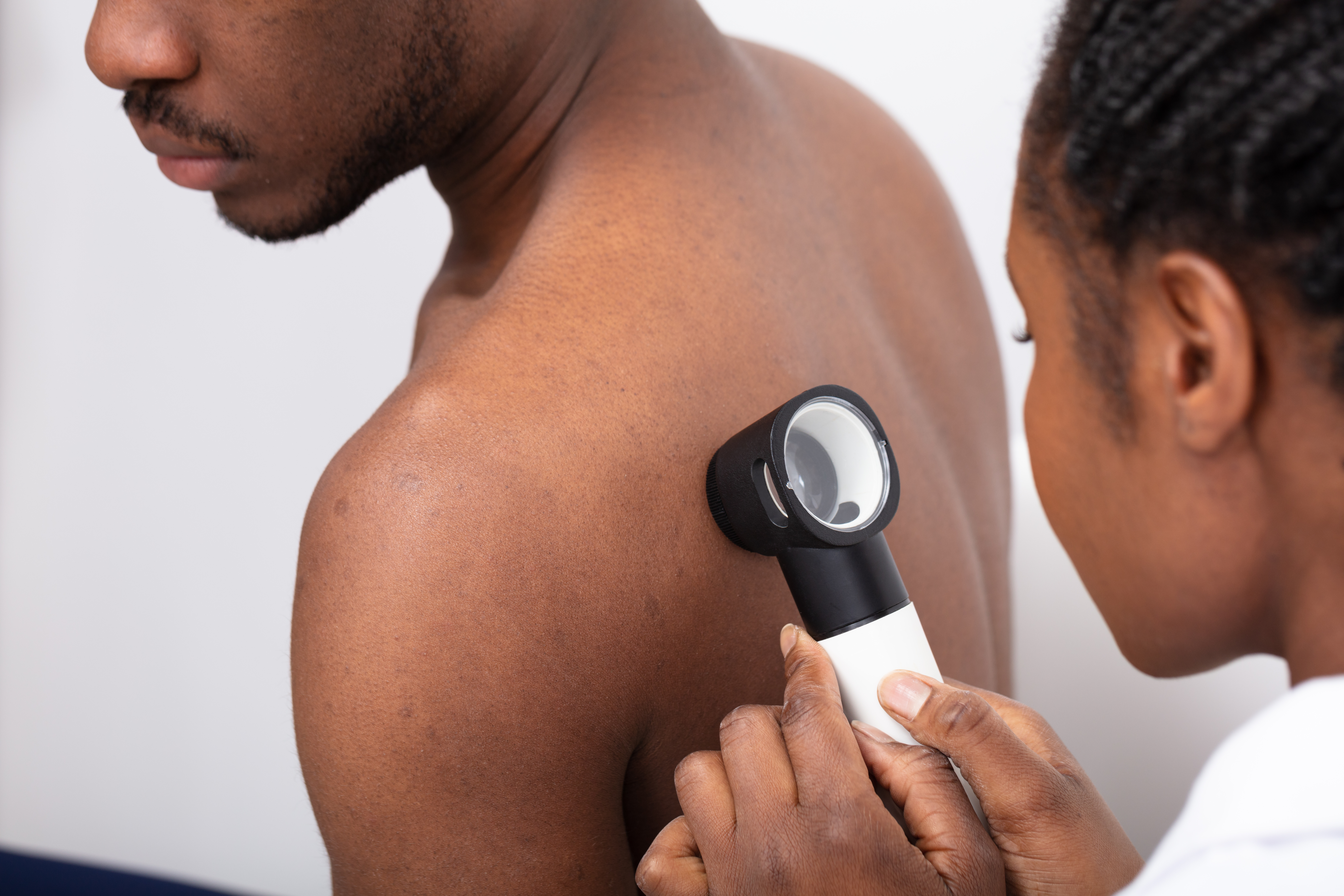(HealthDay News) — Non-Hispanic Black (NHB) melanoma patients have distinct tumor characteristics, presenting with more advanced disease and exhibiting worse outcomes, according to a study published in the May issue of the Journal of Surgical Oncology.
Jessica A. Steadman, M.B.B.S., from the Mayo Clinic in Rochester, Minnesota, and colleagues examined features of melanoma within NHB patients to inform strategies for earlier detection and treatment. Nonmetastatic melanoma patients with known TN category and race were identified from 2004 to 2019 Surveillance, Epidemiology, and End Results data.
Of the 492,597 patients, 0.3 percent were NHB. Compared with non-Hispanic White (NHW) patients, NHB patients were younger (21 versus 17 percent aged younger than 50 years) and were more often female (54 versus 41 percent). The researchers found that lower extremity was the most common site for NHBs (52 versus 15 percent for NHWs); in addition, T category was higher (Tis to T1 and T3 to T4: 55 and 27 percent versus 82 and 8 percent, respectively) and stage at presentation was higher (stage III, 19 versus 6 percent). Among NHB patients, men were older than women and they were more often node-positive. After adjustment for age and clinical node status, five-year stage III cancer-specific survival was 42 percent for NHB men versus 71 percent for women.
“Our contemporary overview of nonmetastatic cutaneous melanoma highlights that NHB patients present with more advanced disease and exhibit inferior outcomes,” the authors write. “This is most notable among older male NHB patients.”
What is melanoma?
Melanoma, the most aggressive form of skin cancer, strikes fear in many due to its potential for rapid spread. While less common in Black individuals compared to lighter skin tones, melanoma in this population presents unique challenges. Understanding how melanoma manifests in Black skin and the factors affecting its diagnosis and prognosis is crucial for improving health outcomes.
Melanoma arises from melanocytes, cells that produce melanin, the pigment responsible for skin color. Ultraviolet (UV) radiation from the sun damages these cells, potentially triggering uncontrolled growth and the formation of cancerous tumors. However, melanin offers a natural defense against UV rays, making Black people, with their naturally higher melanin production, significantly less likely to develop melanoma compared to those with lighter skin tones. Studies suggest a rate of 1 in 1,000 for Black people compared to 30 in 1,000 for non-Hispanic white people.

How does melanoma affect Black Americans?
Despite this protective advantage, melanoma can still occur in Black individuals. When it does, it often presents differently and at a later stage. Unlike the more typical sun-exposed areas like the back or legs seen in lighter skin, melanoma in Black people frequently develops on areas with less sun exposure, such as the palms, soles of the feet, and under the nails (acral lentiginous melanoma). This can make it difficult for both individuals and healthcare providers to identify suspicious lesions. Additionally, the subtle variations in pigmentation on darker skin can make recognizing the classic signs of melanoma, like the “ugly duckling” mole that stands out from others, more challenging.
These factors contribute to a higher likelihood of delayed diagnosis in Black patients. Later-stage melanoma is generally more aggressive and harder to treat, leading to a poorer prognosis. Studies reveal a five-year survival rate of 71 percent for Black patients with melanoma compared to 94 percent for white patients.
Several reasons contribute to this disparity. One factor is a potential lack of awareness among both the public and healthcare providers about the risk of melanoma in Black skin. People with darker skin tones may not be as vigilant about skin cancer checks, and some healthcare providers may have less experience recognizing melanoma on darker skin.
There’s also a need for improved diagnostic tools. Traditional mole-detection algorithms used in digital screenings may be less accurate on darker skin tones. Research into developing more inclusive diagnostic methods is crucial for earlier detection.
There are steps that can be taken to improve the outlook for Black individuals. Increased public education about the risk of melanoma and the importance of regular skin checks, regardless of skin tone, is essential. Knowing the signs of melanoma on darker skin, such as a new, unusual brown, black, or blue spot on the palms, soles, or fingertips, is vital for early detection.
Training in recognizing melanoma on skin of color and utilizing appropriate diagnostic tools are essential for accurate and timely diagnosis. Building trust with patients and encouraging open communication about any skin concerns is key.
Early detection remains the most potent weapon against melanoma. By improving diagnostic tools, and fostering open communication between patients and healthcare providers, we can bridge the gap and ensure that everyone, regardless of skin tone, has the best chance of a successful outcome.
